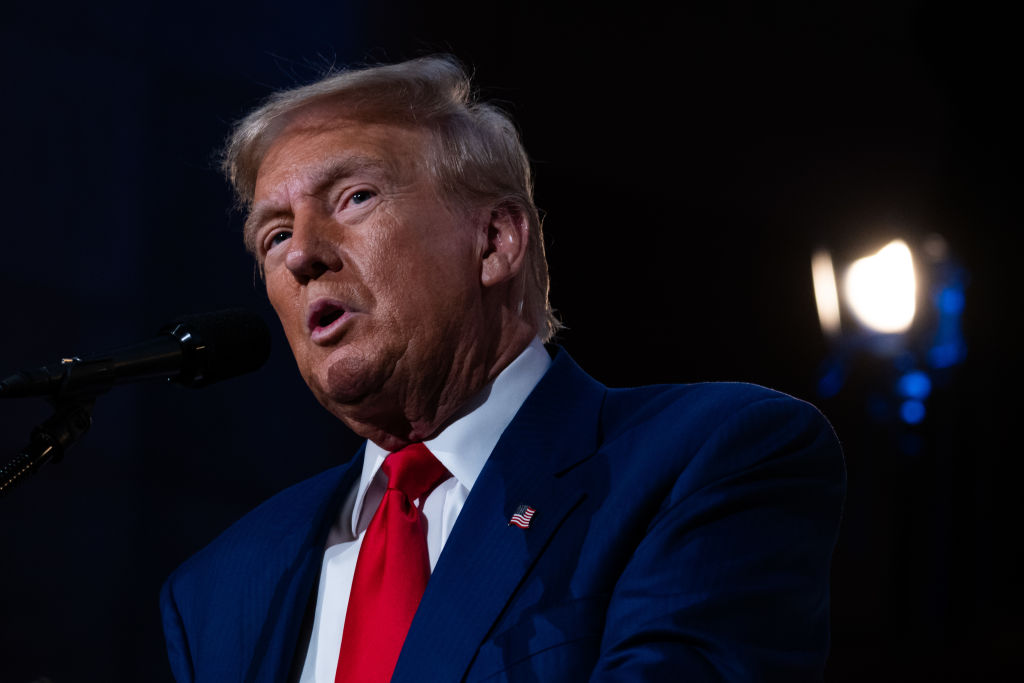
Getting the right tax advice and tips is vital in the complex tax world we live in. The Kiplinger Tax Letter helps you stay right on the money with the latest news and forecasts, with insight from our highly experienced team (Get a free issue of The Kiplinger Tax Letter or subscribe). You can only get the full array of advice by subscribing to the Tax Letter, but we will regularly feature snippets from it online, and here is one of those samples…
Make no mistake about it: Taxes were on the ballot in the November elections, and the tax stakes are higher than usual. That's because much of former President Donald Trump's 2017 tax reform legislation is expiring at the end of 2025.
Most of the provisions impacting individuals and estates in the late-2017 Tax Cuts and Jobs Act, such as the lower individual income tax rates, higher standard deductions, higher child tax credit, the $10,000 cap on deducting state and local taxes, and the larger lifetime estate and gift tax exemption, are slated to end automatically after 2025.
Unless lawmakers act, those provisions will revert to the rules that were in effect for 2017. With the help of Congress, the next president will have to confront these expiring tax provisions.
Let's see how Donald Trump wants to deal with this as well as look at other ways he wants to change the current tax system. I've pulled together these proposals from speeches he has made on the campaign trail, interviews he has given, his social media posts, the 2024 GOP Platform and other sources.
Trump on individual income taxes
First and foremost, Trump wants to make the 2017 tax breaks permanent and take it further with even lower tax rates for individuals, although he hasn't given details, such as whether he would reduce the current top 37% income tax rate.
Rumors abound that Trump would push for a top long-term capital gains rate of 15%, down from 20% now, but he hasn't confirmed this. The Project 2025 initiative, discussed below, proposes a top 15% long-term capital gains tax rate.
Trump supports his vice presidential pick J.D. Vance's idea to give parents a higher child tax credit of $5,000 per child, a 250% increase from the current $2,000-per-child tax credit.
Hospitality and restaurant workers and other tipped employees would get a boon if Trump has his way. He's proposing that tipped income be tax-free.
Another group that Trump wants to benefit is workers with overtime pay. He said at a rally that he supports making overtime pay nontaxable.
Trump has also proposed abolishing the income tax on Social Security benefits. Under current law, Social Security recipients are taxed on up to 85% of their benefits, depending on the amount of their provisional income. Making Social Security benefits nontaxable would appeal to retirees, but would also put a big dent in the Social Security trust fund, from which benefits are paid.
U.S. citizens living overseas might see tax changes under Trump. The U.S. taxes its citizens on their worldwide income, no matter where they reside. Expatriates can alleviate some of the sting of double taxation through foreign tax credits and other breaks, such as the foreign earned income exclusion and foreign housing exclusion.
Trump says he supports ending the double taxation of Americans living overseas. We don’t know exactly what this means. A lobbying group representing U.S. expats has been pushing for years for a regime that taxes expatriates on U.S. income but not foreign income. They also want the U.S. to stop taxing U.S. income of expats who live in countries that tax their U.S. income.
At a campaign rally in Detroit, Trump proposed to let individuals deduct the interest they pay on loans to buy a car. The personal interest deduction was eliminated in 1986, and now Trump seems to wants to bring it back in part. He hasn't elaborated on whether this proposed write-off would be available only to people who itemize on Schedule A of the 1040, or whether he would make it an above-the-line tax deduction claimed on page 1 of the 1040.
Trump says he would use tax incentives and tax credits to promote homeownership. And in an effort to sway voters in storm-damaged parts of the country, he promises a tax deduction for the cost of generators acquired between September 1, 2024, and August 31, 2025.
Surprisingly, Trump seems to want to increase the $10,000 cap on deducting state and local taxes (SALT) or to eliminate the cap altogether. Presently, taxpayers who itemize on Schedule A on Form 1040 can deduct their SALT deductions up to a $10,000 cap. After 2025, unless lawmakers act, taxpayers would be able to write off the full amount of state and local taxes that they pay, as they had prior to 2018.
Trump's economic policy advisers oppose any increase to the $10,000 cap and are urging Trump to lower the monetary cap or to end the SALT deduction altogether. Meanwhile, a number of Capitol Hill Democrats and Republicans from high-tax states, such as New Jersey, New York and Illinois, are pushing for an increase to the $10,000 cap.
Trump floated the idea of eliminating the $10,000 cap, which would allow itemizers to again fully deduct state and local taxes. Trump's latest move comes as a surprise, considering he is the one who signed the legislation in late 2017 that put in place the $10,000 cap. Getting rid of the cap would disproportionately benefit higher-income taxpayers and cost the government a lot of revenue that Trump and Congress would want to use for other proposed tax cuts.
Trump on estate taxes

On estate taxes, the 2017 tax reform law nearly doubled the federal lifetime estate and gift tax exemption. The estate tax exemption is $13.61 million for people who die this year. After 2025, this figure will drop, reverting to the 2017 amount, adjusted for inflation. That's about $7 million.
The 40% top estate tax rate wasn't changed in the 2017 law. Since Trump often says he wants to make permanent the tax cuts in the 2017 law, we believe that promise would also include the higher lifetime estate and gift tax exemption. Whether Trump wants additional easings remains to be seen.
Trump on business taxes
On business taxes, Trump supports dropping the current 21% corporate income tax rate to 20%. He also said he would drop it further to 15%, but only for corporations that make their products in the U.S. Trump hasn't provided details on how this would work.
Trump has often said he wants a 10% (or 20%) across-the-board tariff on imported goods and a 60% tariff on goods imported from China. Although the tariffs would raise revenue for the U.S. government, they would also cause the prices of goods to go up for consumers.
Trump wants to eliminate most of the clean-energy tax credits for businesses and individuals that were enacted under the 2022 Inflation Reduction Act.
He would bring back 100% first-year bonus depreciation and allow more expensing. And he would allow businesses to claim research and development tax deductions in the year the expenses are incurred, rather than requiring firms to amortize the costs over 5 years (or 15 years).
Trump on tax-exempt organizations
When Trump was president, he promised an end to the "Johnson Amendment." And he repeated that vow again on the campaign trail ahead of the 2024 elections.
This federal tax statute, which has been on the books for 70 years, prohibits churches, charities and other 501(c)(3) exempt organizations from participating or intervening in political campaigns, either for or against a candidate running for office. Republican lawmakers have tried to get rid of this statue for years but to no avail.
Project 2025
We can't talk about Trump's tax proposals without also mentioning Project 2025. This policy blueprint, which was designed for the next Republican administration, was spearheaded by the Heritage Foundation and includes a wish list of proposals desired by conservative-leaning think tanks.
There's a lot in there on taxes, including the following proposed changes:
- Two individual income tax rates of 15% and 30%, with the 30% rate starting at about $170,000
- 15% maximum long-term capital gains tax rate
- Annual inflation indexing of capital gains. Under capital gains indexing, taxpayers would essentially be able to increase their tax basis in capital assets by the rate of inflation between the purchase date and the time of sale, thereby decreasing the amount of gain. Trump was all over the map on capital gains indexing during his presidency. He first touted the idea and then nixed it.
- Repeal of the 3.8% net investment income tax (NII) on high earners
- Allow everyone to contribute up to $15,000 a year to a universal savings account, with tax-free withdrawals of gains at any time for any purpose
- Eliminate most tax deductions, tax credits and exclusions, including the state and local tax deduction that itemizers claim on Schedule A of their 1040
- Reduce the estate and gift tax rate to no higher than 20%
- Lower the corporate tax rate to 18%
- Let businesses expense assets with no limits
This first appeared in The Kiplinger Tax Letter. It helps you navigate the complex world of tax by keeping you up-to-date on new and pending changes in tax laws, providing tips to lower your business and personal taxes, and forecasting what the White House and Congress might do with taxes. Get a free issue of The Kiplinger Tax Letter or subscribe.







